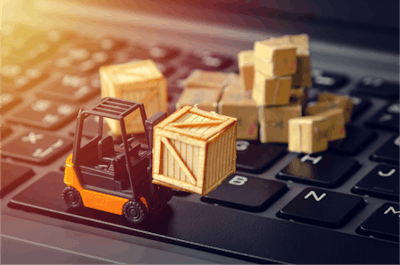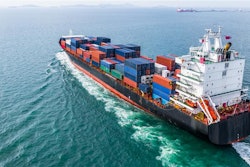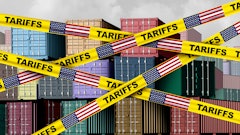
As we head toward summer, there are reasons to be optimistic. The vaccination rollout continues, the International Monetary Fund (IMF) is projecting a faster recovery for the global economy than forecast in January and the $1.9 trillion stimulus is expected to provide a further boost. The stimulus, aiming to “rebuild the backbone of our country,” is intended to reinvigorate the economy, boost employment and drive consumer spending.
This financial support will be welcomed by the shipping and logistics industry. After a rollercoaster year, carriers are showing signs of confidence.
The stimulus and forecasted economic growth are likely to generate further confidence, with three key impacts in particular expected on the shipping and logistics industry.
An increase in consumer spending will generate even more parcels
Stimulus recipients expect to spend 24.7% of their latest check, save 41.6% and use 33.7% to pay down debt, according to a report from the New York Federal Reserve. December’s payments saw them spend a little more (25.5% of the total) save a little less (37.1%) and pay down debts (37.4%). Consumers will likely be cautious for a while about returning to in-store shopping, so e-commerce buying looks set to continue. Consumer pulse survey BOXpoll™ charts found that in April, around 36% of total product purchases were made online. Fifty three percent of consumers questioned say they are continuing to shop online more than they were pre-pandemic.
More online shopping means more parcels. The latest Pitney Bowes Parcel Shipping Index reveals that the United States ships 14.7 billion parcels a year, equating to 466 every second. Parcel volume just keeps on growing and is expected to reach more than 23 billion by 2025. Organizations and carriers must make clear strategic plans on how they expect to send, receive and manage this increasing volume efficiently or risk it impacting their business.
Investment in infrastructure will generate new digital capabilities in shipping and logistics
McKinsey estimates the pandemic has accelerated digital transformation by around seven years. Most of us have witnessed first-hand some of this change across our personal and professional lives as we find digital experiences replacing physical experiences. At this pivotal point in the pandemic, digitalization of goods and services has a central role to play in rebuilding the economy, and the infrastructure and economic recovery package will help drive the accessibility and availability of these digital services.
Over the past year, carriers have had to quickly adapt and invest to offer digital experiences which limit face to face interactions, while managing increasing parcel volumes and changing consumer behaviors. Consumers are looking for greater transparency of their parcel’s journey, delivery notifications and real-time alerts. Businesses have turned to cloud-based sending technologies to help them provide transparent, tracked, automated parcel management with the ability to scale up or down and deliver the best customer experience. Contactless delivery became the norm, and solutions such as intelligent lockers – operated through a digital interface – have grown in demand and popularity.
With $621 billion proposed investment into transportation infrastructure and $300 billion pledged towards utilities networks including broadband infrastructure, carriers and other businesses will need to continue to build and expand their own next-generation digital services to keep pace with as customer demand evolves.
The stimulus will drive innovation
Some of the most innovative businesses were formed following the recession of 2008. Businesses that invested in innovation during or soon after previous recessions gained a distinct advantage over their peers. Already, the past year has seen innovation amplified across the shipping and logistics industry.
E-commerce firms have expanded their in-house shipping and logistics capabilities with pioneering product development and exciting new collaborations. The use of innovative technologies to address last-mile delivery challenges – such as drones and unmanned ground vehicles - continues, as businesses innovate last-mile delivery.
Crowd-sourced last-mile providers diversified, with new collaborations offering innovative new services beyond grocery delivery.
This innovation is set to continue with the stimulus helping ease financial burdens on shipping and logistics companies, freeing them to drive investment in innovation. Expect to see further innovation in automation, cloud, data and analytics and the Internet of Things (IoT) as organizations look to repair missing links in their supply chains and have contingencies in place to manage future risk.
As businesses continue to watch consumers’ buying behaviours closely and quickly adapt to meet their changing expectations, shipping and logistics firms must respond with products and services that help shippers deliver the best customer experience. Shipping is complex, and staying ahead of services, rates, tariffs and taxes is time-intensive. Removing the complexity from shipping through innovation will make life easier for businesses working hard to rebuild after an incredibly challenging year.



















